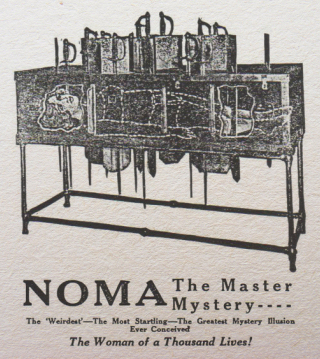First published here on Mariano’s Scifoo14 blog
Magic tricks may have profound (and unexpected) implications – even political. Let’s consider the classical “Sawing-a-woman-in-half” illusion. It was presented for the first time in 1921 by Percy Selbit. Women’s suffrage had just been granted, but in the patriarchal society of those years, the supporters of the vote to women were treated as dangerous terrorist. As a provocation, Selbit offered 20 pounds to their leader Sylvia Pankhurst to cut her in half.

The Magician Monthly, N. 2, Vol. XVII, January 1921.
The woman refused indignantly, but the newspapers spreaded Selbit’s irony:
What a chance for Selbit–to be able to say he has actually “sawn off” the redoubtable “Sylvia”, not once, but many times! (1)
For Percy and his audience, sawing a woman in half was a political message. Rage over Sylvia mean holding off a figure that would claim the same rights as a man.
Even today such a representation of a femicide is hardly blameless. Lucy Fischer contested that this was just a game. In an article on the role of women in magic she asked:
If the male magician only wished to “play” with the female subject, why has he devised for her such a chamber of horrors? (2)
Actually, leafing through magic catalogs may reveal cruel gizmos like this:

My 13-minutes documentary “Donne a metà” (“Women In Halves”) tells the story of this illusion from George Méliés up to our days, investigating the political implications of stage magic and inviting us men to tear away from our flesh the call of violence and the taste of oppression evoked by these narratives.
(Embedded English subtitles available.)
1. The Magician Monthly, N. 2, Vol. XVII, January 1921.
2. Lucy Fischer, “The Lady Vanishes” in Film Before Griffith, University of California Press, Los Angeles 1983, p. 345.
BY-NC-SA 4.0 • Attribution-NonCommercial-ShareAlike 4.0 International